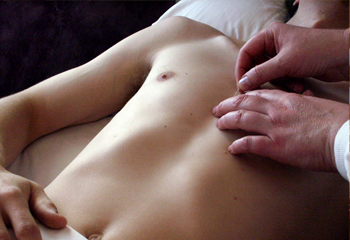Acupuncture
How does it work?
The theory and indeed the practice of Acupuncture may be over 5000 years old and illness is seen as the result of imbalance” in a person’s energy
Whilst Western science has yet to measure "qi", (pronounced chee) most practitioners of Acupuncture believe that "qi" flows continuously throughout the body but is concentrated in channels beneath the skin, known as meridians. These meridians can be thought of as ‘rivers’ of energy that feed the arteries, veins and nerves of the body with vitality. If the meridian becomes blocked for any reason, the tissue that it supplies becomes devitalized. In a devitalized state tissue becomes subject to disease.
The aim of Acupuncture treatment is to restore the smooth flow of qi in the meridians and improve the balance of energy within the individual.
Many factors may disrupt the flow of qi and cause ill health and disease. These factors include the emotions in excess, such as anxiety, anger, grief or fear as well as the obvious causes of ill health, such as nutritional deficiencies or poor genes.
During diagnosis, a practitioner of Traditional acupuncture will not only be looking at the patient's symptoms but will require a detailed understanding of the patient's medical history, lifestyle, diet and emotional stressors. Diagnosis may also include examination of the tongue for its structure, colour and coating and of the pulses at the wrists, which are felt for their quality, rhythm and strength. Traditional Acupuncture is a much more in depth observation of the patient than most styles of acupuncture and aims to establish the ‘root’ cause of imbalance. I have studied and practiced many styles of acupuncture and am registered with the British Medical Acupuncture Society. www.medical-acupuncture.co.uk
What are the benefits of Acupuncture
Acupuncture appears to have a number of positive affects
- The best known is the analgesic effect (pain relieving). The most popular scientific theory for this effect is the Endorphin Release Theory (1976) the release of a group of substances called endorphins which are the body's own naturally occurring pain killing substance.
- The second best known effect is the sedation effect. Many people experience a feeling of well being and relaxation following an acupuncture treatment. This is believed to be due to an increase in the level of a chemical called dopamine within the brain and may explain why acupuncture is successful in treating 'stress' related conditions.
- The third effect is the homeostatic or regulatory effect. There are numerous mechanisms in the body involved in regulating our bodily functions, i.e. blood pressure, temperature, metabolic rate, urinary excretion. Acupuncture has been shown to have a positive effect in balancing these systems, probably due to an effect it has on the endocrine system.
- Fourthly there is the immune enhancing effect. This has been linked to an increase in white corpuscles, antibodies, gamma globulins and other mechanisms which increase the natural resistance of the body.
- The fifth effect of acupuncture appears to be psychological - a calming and tranquillising action, apart from mere sedation. The effect should not be confused with hypnosis or auto suggestion.
- The sixth important function of acupuncture is that it may hasten motor recovery in patients who have suffered degrees of paralysis. The explanation is a complex one and involves the stimulation of the anterior horn cells of the spinal cord.
